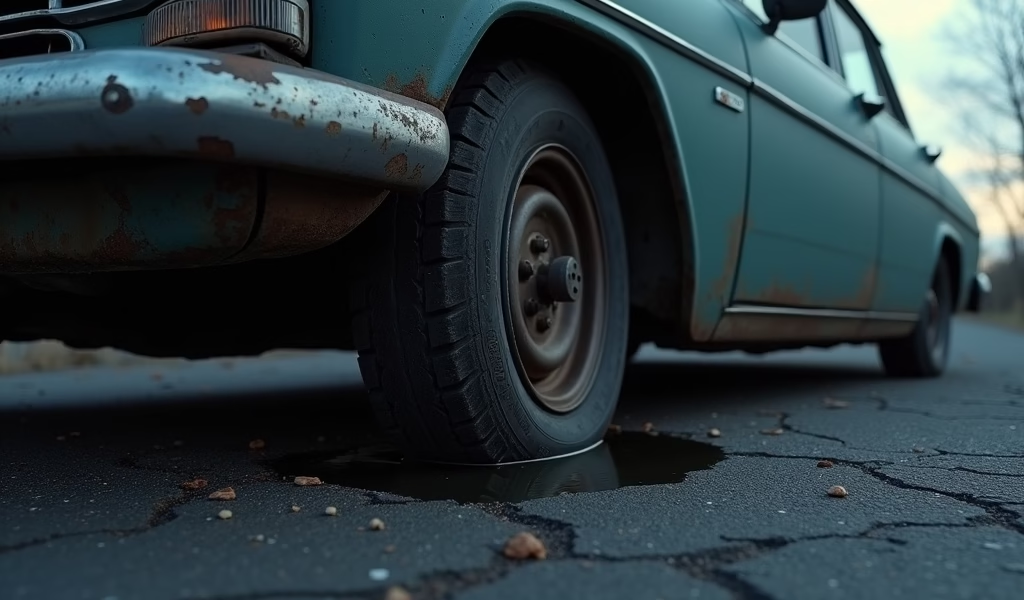Overview
This guide provides essential maintenance strategies for used car owners, covering pre-purchase inspections, regular service scheduling, and knowing when to DIY or seek professional help. The article emphasizes how proper care can extend a vehicle’s lifespan beyond 200,000 miles while identifying common problems at different mileage milestones and providing resources for owners to make informed decisions about their investment.
Table of Contents
- Introduction
- Pre-Purchase Inspection and Evaluation
- Initial Maintenance After Purchase
- Creating a Maintenance Schedule
- DIY Maintenance vs. Professional Service
- Extending the Life of Your Used Car
- Common Problems with Used Cars
- Resources for Used Car Owners
- Conclusion
- Frequently Asked Questions
Introduction
The used car market is booming like never before, with millions of vehicles changing hands each year. Like adopting a pet with an unknown history, purchasing a pre-owned vehicle comes with both excitement and uncertainty. Your “new” used car might have been someone’s reliable daily driver or their neglected problem child—and sometimes it’s hard to tell which until you’ve already signed the paperwork.
That’s why proper maintenance isn’t just recommended for cars for sale used—it’s essential. Think of this comprehensive care guide as your roadmap to a long-lasting relationship with your used car. Whether you’ve just brought home your first pre-owned vehicle or you’re a seasoned buyer looking to maximize your investment, these tips will help your car run like a well-oiled machine (quite literally) for years to come.
Pre-Purchase Inspection and Evaluation
Finding the perfect used car is a bit like dating—first impressions matter, but it’s what’s under the surface that counts. Before you commit to a purchase, arm yourself with this essential inspection checklist:
- Exterior condition: Look for rust, dents, mismatched paint, and panel gaps that might indicate previous accidents
- Tire wear: Uneven wear patterns can signal alignment issues or worse
- Fluid leaks: Check underneath the vehicle for suspicious puddles or stains
- Engine bay: Even if you’re not mechanically inclined, a clean engine bay is usually a good sign
- Test drive performance: Listen for unusual noises, check acceleration, braking, and steering responsiveness
Red flags that should make you think twice include:
- A seller reluctant to provide maintenance records
- Strong odors inside the vehicle (could indicate water damage or other issues)
- Warning lights that “just came on” or “aren’t important”
- Excessive smoke from the exhaust
- A vehicle history report showing multiple owners in a short period
While your own inspection is valuable, consider it your first line of defense rather than your only protection. Investing $100-200 in a professional pre-purchase inspection can save thousands in unexpected repairs. Think of it as a small insurance premium against a potentially large claim. According to Consumer Reports, buyers who skip professional inspections are significantly more likely to experience major issues within the first year of ownership.

Initial Maintenance After Purchase
Congratulations on your used car purchase! Now, before you plan that road trip or start commuting, it’s time for some crucial first steps. Consider this your vehicle’s welcome home ritual.
Start with a complete fluid overhaul—it’s like giving your car a cleanse after its previous life. Unless you have documentation proving recent changes, replace:
- Engine oil and filter (the lifeblood of your engine)
- Transmission fluid (particularly important if shifting feels rough)
- Brake fluid (critical for safety)
- Coolant (prevents overheating and freezing)
- Power steering fluid (ensures smooth steering)
Next, address wear items that are often neglected by previous owners:
- Air filter (a clogged filter reduces fuel efficiency)
- Cabin filter (improves air quality inside your vehicle)
- Spark plugs (if they’re due for replacement)
- Belts and hoses (look for cracks or wear)
- Windshield wipers (often overlooked but crucial for safety)
This initial service establishes your maintenance baseline—think of it as resetting the clock on your vehicle’s health. Keep detailed records of what you’ve done and when, as this becomes your starting point for future maintenance scheduling.
Creating a Maintenance Schedule
A maintenance schedule for your used car is like a fitness plan—consistency is key to long-term success. Rather than taking a one-size-fits-all approach, develop a personalized timeline based on:
- Your vehicle’s make, model, and current mileage
- The manufacturer’s recommended service intervals
- Your typical driving conditions (city vs. highway, climate, etc.)
- Any known issues common to your specific model
Tracking maintenance history might seem tedious, but it’s invaluable for preventing problems and preserving resale value. Consider these methods:
- The classic: Keep a small notebook in your glove compartment
- The modern: Use maintenance tracking apps like CARFAX Car Care or Simply Auto
- The thorough: Maintain a digital spreadsheet with dates, mileage, and services performed
Setting up automated reminders through these apps or even your phone’s calendar can prevent costly oversights. Remember, manufacturer recommendations exist for a reason—they’re not suggestions but rather carefully calculated intervals designed to maximize your vehicle’s longevity.
Wondering where is the best place to buy a used car? Regardless of where you purchase, maintaining proper service records adds significant value when it’s time to sell.
DIY Maintenance vs. Professional Service
Not all maintenance tasks are created equal. Some are as simple as making a sandwich, while others are more like baking a soufflé—best left to professionals. Here’s a quick guide to what you can typically handle yourself:
DIY-Friendly Tasks:
- Oil and filter changes (with proper tools and disposal methods)
- Air filter replacement
- Wiper blade installation
- Battery maintenance and replacement
- Tire pressure checks and adjustments
- Light bulb replacements (for most models)
Leave to the Professionals:
- Timing belt replacement
- Transmission service
- Major electrical diagnoses
- Suspension work
- Anything involving the airbag system
- Complex computer diagnostics
Balancing DIY maintenance with professional service can save money without compromising your vehicle’s health. When seeking professional help, look beyond the cheapest option. Finding a mechanic who specializes in your specific make can be worth the extra cost—they’ll spot problems others might miss and have experience with your car’s common issues. The AAA Approved Auto Repair Network can help you find trustworthy shops in your area.

Extending the Life of Your Used Car
With proper care, many modern vehicles can easily surpass 200,000 miles—that’s like circling the earth eight times! Implementing these preventative maintenance strategies can help your used car achieve impressive longevity:
Preventative Maintenance Strategies:
- Follow oil change schedules religiously—oil is your engine’s lifeblood
- Replace timing belts within recommended intervals (typically 60,000-100,000 miles)
- Flush cooling systems every 30,000-50,000 miles
- Clean fuel injectors periodically (especially if you notice reduced performance)
- Keep battery terminals clean and connections tight
Your driving habits are just as important as what happens under the hood. Treat your used car kindly by:
- Allowing the engine to warm up for 30-60 seconds before driving (especially in cold weather)
- Avoiding aggressive acceleration and hard braking when possible
- Maintaining steady speeds rather than constant speed changes
- Not overloading your vehicle beyond its capacity
Storage and protection might seem secondary, but they significantly impact long-term condition:
- Park in garages or shaded areas when possible to prevent UV damage
- Consider a high-quality car cover if outdoor parking is your only option
- Wash regularly to prevent corrosive substances from damaging paint and undercarriage
- Apply wax every 3-6 months for paint protection
Finally, address issues while they’re minor irritations rather than major problems. That unusual sound or slight vibration won’t fix itself—and will likely become more expensive to repair the longer you wait.
Common Problems with Used Cars
Used cars, like people, tend to develop predictable issues at certain ages. Being aware of these mileage milestones can help you stay ahead of problems:
30,000-60,000 miles:
- Brake pad replacement
- Tire replacement
- Minor suspension wear
60,000-100,000 miles:
- Timing belt/chain service
- Water pump consideration
- Transmission service
- Suspension component wear
100,000+ miles:
- Starter and alternator issues
- Fuel pump concerns
- Major suspension overhaul
- Catalytic converter efficiency
Some warning signs should never be ignored, regardless of your car’s age or mileage:
- Illuminated check engine light
- Grinding or squealing brakes
- Fluid leaks (especially if colored or greasy)
- Engine hesitation or rough running
- Excessive exhaust smoke
- Difficulty starting
Many problems have budget-friendly solutions if addressed early. For example, replacing a timing belt at the recommended interval might cost $500-800, but waiting until it breaks could result in a $2,000-3,000 engine repair.
That said, sometimes the smartest financial decision is knowing when to stop investing in repairs. When repair costs exceed 50% of your vehicle’s value within a 12-month period, it might be time to consider your options. Many car dealer used cars come with limited warranties that can provide peace of mind during the transition period.
Resources for Used Car Owners
Knowledge is power when it comes to used car ownership. Expand your understanding with these valuable resources:
Recommended Reading:
- “Auto Repair for Dummies” by Deanna Sclar
- Your vehicle’s factory service manual (often available as PDFs online)
- Consumer Reports used car buying guides
Online Communities and Forums:
- Make/model-specific forums (search “[Your Car Model] forum”)
- Reddit’s r/MechanicAdvice and r/cartalk communities
- CarTalk.com’s community section
Helpful Videos and Tutorials:
- ChrisFix on YouTube (excellent DIY tutorials)
- Scotty Kilmer’s channel for maintenance tips
- Engineering Explained for understanding how your car works
Parts Sourcing Tips:
- Compare prices between auto parts chains, dealerships, and online retailers
- Consider high-quality aftermarket parts for out-of-warranty vehicles
- Don’t overlook rebuilt/remanufactured components for significant savings on major parts
Conclusion
Taking care of a used car is more marathon than sprint. The extra attention you give your vehicle today pays dividends in reliability, safety, and savings tomorrow. The most successful used car owners combine vigilance with education—learning the quirks and needs of their specific vehicle.
Remember that every used car has a story. By providing proper care, you’re adding a positive chapter to that story, whether you keep the car for years or pass it along to its next owner. A well-maintained used car isn’t just transportation; it’s a testament to thoughtful stewardship.
At Knows Your Car, we understand that your vehicle is more than just transportation—it’s a significant investment that deserves proper care. Our team specializes in helping used car owners navigate the challenges of maintenance and repair. Visit us at knowsyourcar.com to learn how our technology-driven approach can help keep your used car running smoothly for years to come. Your car knows when it needs attention—we know how to provide it.
Frequently Asked Questions
How much lower should I offer when buying a used car?
Start with 15-20% below asking price and be prepared to negotiate upward. Market research through sites like Kelley Blue Book will give you the most accurate price range for your specific vehicle.
What’s the best way to finance a used car purchase?
Secure pre-approval from your bank or credit union before shopping to strengthen your negotiating position. Compare this rate with dealer financing options, as they sometimes offer competitive promotions.
Should I buy a certified pre-owned car or a regular used car?
Certified pre-owned vehicles typically cost more but come with dealer inspections and limited warranties. Regular used cars cost less upfront but may require more immediate maintenance and come with fewer guarantees.
How many miles is too many for a used car?
The quality of maintenance matters more than absolute mileage; a well-maintained car with 100,000 miles may be better than a neglected one with 50,000. Modern vehicles regularly exceed 200,000 miles with proper care.
Is it worth buying extended warranties for used cars?
Extended warranties can provide peace of mind but evaluate the cost against the vehicle’s reliability history. Research the specific warranty’s coverage exclusions and consider setting aside the same money in a repair fund instead.


Pingback: Used Vehicle Inventory: 5 Pro Care Tips - knowsyourcar.com
Pingback: Used Saloon Care: 7 Essential Treatments - knowsyourcar.com
Pingback: ised cars for sale: Top Maintenance Tips - knowsyourcar.com